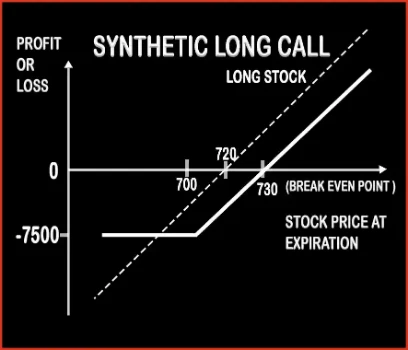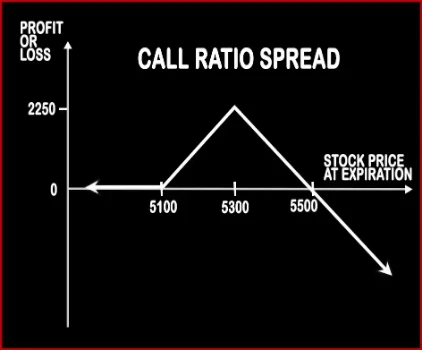Compare Strategies
| SYNTHETIC LONG CALL | RATIO CALL SPREAD | |
|---|---|---|

|

|
|
| About Strategy |
Synthetic Long Call Option StrategyA trader is bullish in nature for short term, but also fearful about the downside risk associated with it. Here, a trader wants to hold an underlying asset either in physical form like in case of commodities or demat (electronic) form in case of stocks. But he is always exposed to downside risk and in order to mitigate his losses, |
Ratio Call Spread Option StrategyAs the name suggests, a ratio of 2:1 is followed i.e. buy 1 ITM Call and simultaneously sell OTM Calls double the number of ITM Calls (In this case 2). This strategy is used by trader who is neutral on the market and bearish on the volatility in the near future. Here profits will be capped up to the premium amount and risk will be potentially unlimited since he is .. |
SYNTHETIC LONG CALL Vs RATIO CALL SPREAD - Details
| SYNTHETIC LONG CALL | RATIO CALL SPREAD | |
|---|---|---|
| Market View | Bullish | Neutral |
| Type (CE/PE) | CE (Call Option) | CE (Call Option) |
| Number Of Positions | 2 | 3 |
| Strategy Level | Beginners | Beginners |
| Reward Profile | When Price of Underlying > Purchase Price of Underlying + Premium Paid | Limited |
| Risk Profile | Limited (Maximum loss happens when the price of instrument move above from the strike price of put) | Unlimited |
| Breakeven Point | Underlying Price + Put Premium | Upper Breakeven Point = Strike Price of Short Calls + (Points of Maximum Profit / Number of Uncovered Calls), Lower Breakeven Point = Strike Price of Long Call +/- Net Premium Paid or Received |
SYNTHETIC LONG CALL Vs RATIO CALL SPREAD - When & How to use ?
| SYNTHETIC LONG CALL | RATIO CALL SPREAD | |
|---|---|---|
| Market View | Bullish | Neutral |
| When to use? | A trader is bullish in nature for short term, but also fearful about the downside risk associated with it. | This strategy is used by trader who is neutral on the market and bearish on the volatility in the near future. Here profits will be capped up to the premium amount and risk will be potentially unlimited since he is selling two calls. |
| Action | Buy 1 ATM Put or OTM Put | Buy 1 ITM Call, Sell 2 OTM Calls |
| Breakeven Point | Underlying Price + Put Premium | Upper Breakeven Point = Strike Price of Short Calls + (Points of Maximum Profit / Number of Uncovered Calls), Lower Breakeven Point = Strike Price of Long Call +/- Net Premium Paid or Received |
SYNTHETIC LONG CALL Vs RATIO CALL SPREAD - Risk & Reward
| SYNTHETIC LONG CALL | RATIO CALL SPREAD | |
|---|---|---|
| Maximum Profit Scenario | Current Price - Purchase Price - Premium Paid | Strike Price of Short Call - Strike Price of Long Call + Net Premium Received - Commissions Paid |
| Maximum Loss Scenario | Premium Paid | Price of Underlying - Strike Price of Short Calls - Max Profit + Commissions Paid |
| Risk | Limited | Unlimited |
| Reward | Unlimited | Limited |
SYNTHETIC LONG CALL Vs RATIO CALL SPREAD - Strategy Pros & Cons
| SYNTHETIC LONG CALL | RATIO CALL SPREAD | |
|---|---|---|
| Similar Strategies | Protective Put, Long Call | Variable Ratio Write |
| Disadvantage | •Chances of loss if the underlying goes down. •Incur losses if option is exercised. | • Unlimited potential loss. • Complex strategy with limited profit. |
| Advantages | •Limited risk, unlimited profit. •Protection to your long-term holdings. • Limited loss to the to the premium paid for Put option. | • Downside risk is almost zero. • Investors can book profit from share prices moving within given limits. • Trader can maximise profit when the share closes at the upper breakeven point. |